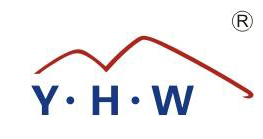Aluminum roofing sheets have emerged as a leading material in the construction industry, offering a unique combination of durability, lightweight design, and environmental sustainability. As architects, builders, and homeowners increasingly prioritize energy efficiency and long-term performance, aluminum roofing sheets provide a versatile and reliable solution. This article delves into the properties, manufacturing processes, applications, and sustainability benefits of aluminum roofing sheets, while exploring their role in shaping the future of modern construction.
1. The Science of Aluminum Roofing Sheets: Material Properties and Advantages
Aluminum is a lightweight, non-ferrous metal known for its exceptional strength-to-weight ratio, corrosion resistance, and malleability. These properties make it an ideal material for roofing applications:
Lightweight: Aluminum roofing sheets weigh approximately one-third as much as steel, reducing structural load and installation costs.
Corrosion resistance: A natural oxide layer forms on aluminum’s surface, protecting it from rust and weathering.
Reflectivity: High solar reflectance (up to 95%) reduces heat absorption, improving energy efficiency.
Malleability: Aluminum can be easily shaped into various profiles, such as corrugated, standing seam, or shingle-style sheets.
These characteristics make aluminum roofing sheets suitable for a wide range of climates and architectural styles.
2. Manufacturing Process: From Raw Material to Finished Product
The production of aluminum roofing sheets involves several stages:
Extraction and refining: Aluminum is extracted from bauxite ore through the Bayer process and refined into alumina, which is then smelted into pure aluminum.
Alloying: Aluminum is often alloyed with elements like magnesium, silicon, or zinc to enhance strength and durability.
Rolling: The aluminum is hot-rolled and cold-rolled into thin sheets, typically 0.5–1.2 mm thick.
Coating and finishing:
Anodizing: Electrochemical process that thickens the natural oxide layer for enhanced corrosion resistance.
PVDF coating: Polyvinylidene fluoride coatings provide UV resistance and color retention.
Stone-coated finishes: Aluminum sheets coated with stone granules mimic traditional roofing materials like clay tiles or wood shingles.
Advanced manufacturing techniques, such as continuous casting and automated coating systems, ensure consistent quality and performance.
3. Applications: Versatility in Modern Construction
Aluminum roofing sheets are used in a variety of residential, commercial, and industrial applications:
Residential roofing: Lightweight and durable, ideal for sloped roofs in homes.
Commercial buildings: Used in large-span structures like warehouses, airports, and shopping malls.
Industrial facilities: Resistant to chemical exposure, making it suitable for factories and chemical plants.
Green buildings: High reflectivity and recyclability align with LEED and BREEAM certification requirements.
4. Advantages Over Traditional Roofing Materials
Longevity: Aluminum roofs can last 50+ years with minimal maintenance, outperforming asphalt shingles and steel.
Energy efficiency: Reflective surfaces reduce cooling costs by up to 20%, particularly in hot climates.
Fire resistance: Non-combustible and meets stringent fire safety standards.
Low maintenance: Resistant to rust, rot, and insect damage, reducing repair and replacement costs.

5. Sustainability: A Green Choice for Modern Construction
Aluminum roofing sheets are a sustainable alternative to traditional materials due to:
Recyclability: Aluminum is 100% recyclable without loss of quality, and recycled aluminum requires only 5% of the energy used in primary production.
Energy efficiency: Reflective coatings reduce urban heat island effects and lower energy consumption.
Resource efficiency: Lightweight design reduces transportation emissions and structural material requirements.
However, the energy-intensive nature of primary aluminum production remains a challenge. Innovations like renewable energy-powered smelters and closed-loop recycling systems aim to mitigate this issue.
6. Innovations in Aluminum Roofing Technology
Cool roofs: Advanced coatings with high solar reflectance and thermal emittance improve energy efficiency.
Integrated solar panels: Aluminum sheets with embedded photovoltaic cells generate renewable energy.
Self-cleaning coatings: Hydrophilic or photocatalytic coatings reduce dirt accumulation and maintenance needs.
Modular designs: Prefabricated aluminum roofing systems simplify installation and reduce waste.
7. Challenges and Future Directions
Cost: Aluminum roofing sheets are more expensive upfront than asphalt or steel, though long-term savings offset this.
Noise: Can be noisier during rain or hail, though insulation layers mitigate this effect.
Denting: Softer than steel, making it prone to dents from impacts.
Future trends include:
Nano-coatings: Enhance durability, reflectivity, and self-cleaning properties.
Smart roofs: Integration with sensors for real-time monitoring of weather, temperature, and structural integrity.
Circular economy: Increased use of recycled aluminum and end-of-life recycling programs.
8. Case Studies: Real-World Applications
Residential projects: Aluminum roofing sheets are increasingly used in eco-friendly homes, combining aesthetics with energy efficiency.
Commercial success: Large-scale installations, such as the Denver International Airport, showcase aluminum’s durability and low maintenance.
Disaster-resistant designs: In hurricane-prone regions, aluminum roofs provide superior wind resistance compared to traditional materials.




 English
English русский
русский Español
Español عربى
عربى















